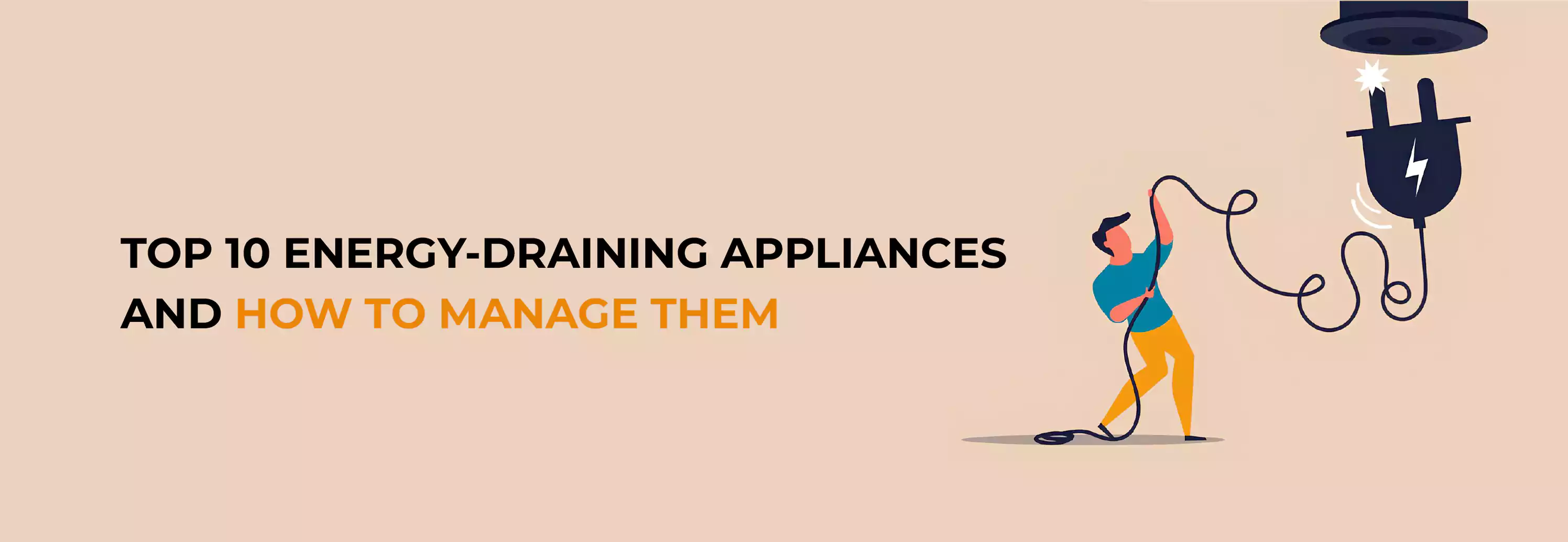Slaying Energy Vampires:
A Guide to Taming Power-Hungry Appliances
In a world where energy costs are creeping upward like ghosts in the night, battling against energy-draining appliances is a battle worth fighting. These sneaky culprits lurk in our homes, silently consuming power and haunting our utility bills. But fear not! Armed with knowledge and a few energy-saving tricks, you can banish these energy vampires and pave the way for a more sustainable future.
The Impact of Energy-Draining Appliances
As the specter of rising electricity prices looms, it's essential to understand how our appliances contribute to our utility bills. Inefficient appliances can add hundreds of dollars to annual energy expenses, making them real monsters in the world of household expenses. Identifying and taming these energy-hungry beasts is the first step towards reigning in your energy costs.
The Top 10 Energy-Draining Appliances
-
HVAC Systems: Heating, ventilation, and air conditioning (HVAC) systems are the biggest energy consumers in most homes, accounting for a spine-chilling 51% of household energy consumption. Regular maintenance and smart technologies can help tame these energy behemoths.
-
Water Heaters: Hot water is a precious commodity, but water heaters consume a staggering 18% of household energy. Mindful usage and maintenance practices can help keep costs under control.
-
Lighting: While not traditionally considered appliances, lighting plays a significant role in household energy consumption, accounting for 15% of usage. Switching to energy-efficient LED bulbs and employing smart lighting strategies can lead to significant savings.
-
Laundry Appliances: Washers and dryers may not be used daily, but each cycle consumes a significant amount of energy. Mindful laundry practices, such as washing full loads and air drying clothes, can lead to substantial savings.
-
Refrigerators: Always-on appliances like refrigerators consume 4% of household energy. Upgrading to energy-efficient models and practicing smart usage habits can help minimize their impact on your utility bills.
-
Electric Ovens and Stoves: Electric cooking appliances consume 4% of household energy, especially during peak cooking times. Using smaller, more efficient appliances and cooking during cooler hours can help reduce their energy consumption.
-
Dishwashers: Dishwashers, like laundry appliances, consume energy based on their usage frequency. Employing energy-saving features and running full loads can help optimize their efficiency.
-
Computers: Computers and electronics account for 6% of household energy consumption, with desktop computers being notorious energy vampires. Enabling power-saving settings and unplugging devices when not in use can help reduce their energy consumption.
-
Televisions and Entertainment Systems: Entertainment systems, including televisions, can consume a significant amount of energy, especially if left on standby mode. Choosing energy-efficient models and employing smart power management strategies can help minimize their energy impact.
-
Microwaves: While generally energy-efficient, older microwaves can consume unnecessary energy through phantom loads. Upgrading to newer models and unplugging when not in use can help mitigate their energy consumption.
Upgrading to Energy-Efficient Appliances
When the time comes to replace your appliances, opting for energy-efficient models can lead to substantial savings over time. Look for appliances with the Energy Star label, which denotes high efficiency. Additionally, take advantage of government incentives and rebates to offset the cost of upgrades and installations.
Monitoring Household Energy Use
Regularly monitoring your energy consumption and employing energy-saving practices is crucial for maintaining low utility bills. Consider investing in smart appliances and energy management systems to optimize your energy usage and track your progress over time.

-
How can I determine which appliances in my home are the most energy-draining?
Answer: Start by assessing the age of your appliances and reviewing their Energy Guide Labels (EGL). Consider an energy audit for a comprehensive assessment of your home's energy performance.
-
What are some simple tips for reducing energy consumption of my appliances?
Answer: Practice energy conservation habits such as turning off lights and electronics when not in use, and perform regular maintenance on your appliances.
-
Will replacing older appliances with energy-efficient models really save me money?
Answer: Yes, energy-efficient appliances consume less energy and provide significant cost savings over their lifespan.
-
Are there government incentives or rebates available for purchasing energy-efficient appliances?
Answer: Yes, the government offers rebates and tax incentives for efficiency upgrades through programs like Energy Star.
-
How can I track my energy usage and ensure that my conservation efforts are working?
Answer: Learn how to read your utility bill and meters, and compare current and past bills to track changes over time. Invest in smart appliances and energy management systems for real-time monitoring and optimization.

